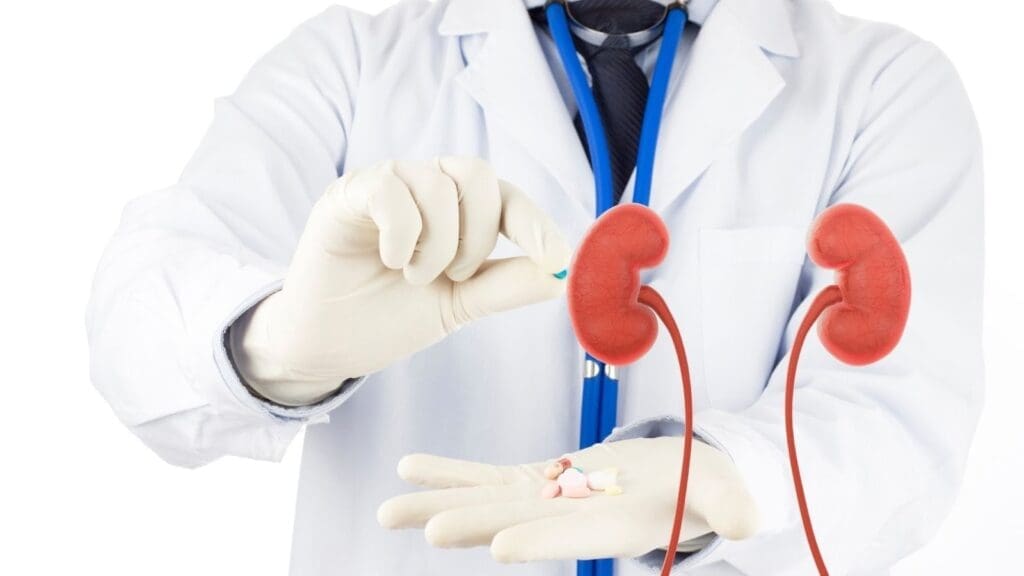Last Updated on November 25, 2025 by
Urinalysis is a key tool in urology today. The 2024 Urologic Diseases in America report shows that 69% of men with benign prostatic hyperplasia and lower urinary tract symptoms (BPH/LUTS) got a urinalysis within 15 months of being diagnosed. This highlights the importance of understanding what tests urine sample in detecting and monitoring such conditions.

This data shows how important urinalysis is in diagnosing and treating urological issues. As a versatile and non-invasive test, urinalysis helps find serious conditions early. It’s a vital part of urological care.
Diagnostic testing is key in treating urological issues. More people are facing problems like Benign Prostatic Hyperplasia/Lower Urinary Tract Symptoms (BPH/LUTS). This has made accurate tests more important.

Issues like BPH/LUTS, urinary tract infections (UTIs), blood in urine, and kidney stones need careful testing. The 2024 Urologic Diseases in America report highlights the need for early detection and treatment.
Common conditions include:
Laboratory tests, like urinalysis and serum creatinine testing, are vital. They help diagnose and manage urological issues. Urinalysis is crucial for BPH/LUTS, UTIs, hematuria, and kidney health.
Key laboratory tests include:
Using evidence-based testing is crucial. It ensures tests are used wisely and effectively. For example, serum creatinine testing is used in 94% of BPH/LUTS cases.
“The judicious use of diagnostic tests is critical in the management of urological conditions, ensuring accurate diagnoses and effective treatment plans.”
Following evidence-based protocols and using various tests helps healthcare providers. This improves patient care and outcomes in urology.
Urinalysis is a key tool in urological care. It helps spot problems in the urinary system. Analyzing a urine sample can reveal many things.

A full urinalysis checks several important things. These include:
Each part gives vital info about the patient’s health. It helps doctors diagnose and treat urological issues well.
Urinalysis is key for BPH/LUTS patients. About 69% of these patients get a urinalysis. This shows how important it is for their care.
Studies back up the use of urinalysis for BPH/LUTS. It proves its value in medical practice.
Getting accurate urinalysis results depends on how the sample is collected and handled. Healthcare providers stress the need for:
Following these steps is key to reliable results. This helps in making the right diagnosis and treatment plan.
In urology, blood work and serum testing are key for checking patient health and making treatment plans. These tests help doctors look at kidney function, prostate health, and hormone balance. They guide how to manage urological conditions.
Serum creatinine is a key marker for kidney function. It’s especially important for patients with Benign Prostatic Hyperplasia (BPH) or Lower Urinary Tract Symptoms (LUTS). A huge 94% of these patients get their serum creatinine tested.
This shows how important it is in urological assessment. High levels of serum creatinine mean the kidneys might not be working properly. This could mean the treatment plan needs to change.
The importance of serum creatinine testing is clear:
Blood Urea Nitrogen (BUN) is another important test for kidney function. It’s often checked with serum creatinine. BUN helps doctors see if the kidneys are filtering waste well.
In urology, BUN levels give clues about kidney health. They help spot kidney damage or disease.
Prostate-Specific Antigen (PSA) testing is common in urology, with a 63% rate in some patients. PSA helps find prostate problems, like cancer. Doctors look at PSA results with other health factors, like age and medical history.
PSA testing is important for:
Hormone testing, including testosterone, is vital in urology. It’s key for checking male hypogonadism and other hormone disorders. Testosterone affects male health, such as sex drive and erectile function.
Hormone testing in urology covers:
Urological testing has many uses in patient care. It helps diagnose and manage issues with the urinary tract and male reproductive system.
Benign Prostatic Hyperplasia (BPH) is common in older men. It causes the prostate gland to grow. Tests like urinalysis and serum prostate-specific antigen (PSA) testing are key in diagnosing it.
To diagnose BPH, doctors use a mix of clinical checks, lab tests, and sometimes imaging. Urinalysis helps rule out infections. PSA testing checks for prostate cancer risk.
Urinary Tract Infections (UTIs) are bacterial infections in the urinary system. Urine culture is crucial for diagnosing UTIs.
Managing UTIs means finding the bacteria and treating them with antibiotics. Urological tests check if the treatment is working and if there are complications.
Hematuria, or blood in the urine, needs a detailed check-up. The check-up includes urinalysis, imaging studies like ultrasound or CT scans, and sometimes cystoscopy.
The goal is to find the cause of the blood, which could be something simple or serious like cancer.
Urological tests are also key for checking kidney and metabolic health. Tests like serum creatinine and blood urea nitrogen (BUN) check kidney function.
These tests also help diagnose and manage metabolic disorders like diabetes and kidney stones. A full urological check is important for good urinary health and to avoid problems.
The world of diagnostic testing in urology is always changing. This is thanks to new medical technology and a better understanding of urological issues. Looking ahead, diagnostic testing will continue to be key in urological care. It helps doctors make accurate diagnoses and plan effective treatments.
Liv Hospital is leading the way by using the latest testing methods and standards. This mirrors the global trend in urology, where urinalysis is a key part of first checks. By staying ahead in testing, places like Liv Hospital are set to improve patient care and shape the future of urology.
The field will keep growing, and using new diagnostic tools and methods will be essential. With a focus on the latest protocols and top-notch results, the future of urology testing looks bright. It promises to make patient care even better and guide global practice.
The most common test in urology is the urinalysis. It helps diagnose and manage many urological issues. This includes benign prostatic hyperplasia and lower urinary tract symptoms (BPH/LUTS).
Urinalysis is key in urological care. It’s used for BPH/LUTS, urinary tract infections, and to check for blood in urine. It also helps assess kidney and metabolic health.
The 2024 Urologic Diseases in America report shows 69% of men with new BPH/LUTS diagnoses had urinalysis within 15 months.
Besides urinalysis, 94% of BPH/LUTS patients got serum creatinine testing. Also, 63% had prostate-specific antigen (PSA) testing. These tests are vital for kidney function and prostate health checks.
Blood tests, like creatinine, BUN, and testosterone, are tailored for each patient. They help check kidney function, prostate health, and hormonal balance.
Serum creatinine testing is crucial for BPH/LUTS patients. It’s done in 94% of cases to assess kidney function and guide treatment.
Urinalysis is vital for UTI screening and management. It allows for quick diagnosis and the right treatment.
Subscribe to our e-newsletter to stay informed about the latest innovations in the world of health and exclusive offers!